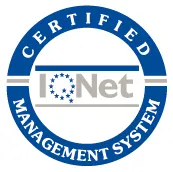
In today’s competitive business world, professional development has become a key tool in maximising employee potential and achieving business goals. It is not just about providing technical training, but about designing a comprehensive plan that fosters continuous growth and the development of both technical and soft skills.
Table of Contents
By understanding and applying these concepts, companies can strengthen their teams and prepare their employees to succeed when faced with future challenges.
What is professional development?
Professional development is the objective planning within a company which is put into place by a company’s HR department, with the aim of improving its employees’ professional skills. The professional skills targeted for improvement are generally applicable to different types of organisations and are aligned with career objectives.
Professional development programme participants can range from new employees to senior executives, and these programmes address both technical and soft skills. For the vast majority of industries, professional development programmes represent a strategic effort to support and enhance employee capabilities.
What are the benefits of Professional Development?
Far from being just a buzzword or a nice-sounding term to promote company benefits, professional development brings with it direct benefits in terms of both wellbeing and motivation, as well as improvements in turnover and, above all, productivity.
According to LinkedIn’s Workplace Learning Report 2024 and Developing Employees and Improving Performance report, three benefits of implementing programmes of this type are clear:
- 70% of workers say learning enhances a sense of connection to their workplace: Creating a culture of learning within an organisation is vital to establishing a sense of belonging and loyalty.
- 80% of workers say learning adds purpose to their work: Working with purpose is not simply the newest buzzword in business, but it is a proven powerful driver of productivity and engagement.
- 94% of workers stay longer at companies that invest in their professional development: Employee retention is a significant challenge for many organisations. Investing in professional development can therefore be a game changer, as it proves to employees that the company is invested in their long-term success.
Professional Development and Training: What is the difference?
Although often used interchangeably, professional development and training are not the same thing.
Training refers to the acquisition of specific knowledge and skills to perform specific tasks or meet technical requirements. It tends to be more structured and oriented towards immediate goals, such as training in the use of specific software or learning precise techniques for a particular job.
Professional development, however, is a broader and longer-term concept, which focuses on the continuous growth of an individual in their career. It encompasses not only the acquisition of technical skills, but also the development of soft skills, such as leadership, communication and time management.
For this reason, professional development plans include employee training as an essential element contributing to their continuous improvement, something which does not happen in the opposite direction.

How to create a Professional Development Plan
When implemented correctly, development plans contribute to improving not only the participant’s job performance, but also their personal sphere of life. However, in order to reap the benefits associated with development, the plan needs to be executed in a methodical and efficient manner.
1. Conduct a skills gap analysis: The first step in creating an employee development plan is to identify areas where staff need to be upskilled. This training-needs analysis puts organisational objectives at the heart of the programme.
2. Identify employees (or areas) needing improvement: Determine the individuals or departments which show the most interest, potential and/or proactivity to learn. Focus your initial efforts on those employees or areas, not only by developing current skills, but also by investing in leadership and management training when they are ready.
3. Align employee and company goals: An employee development plan can only work if employees are involved. Consider not only the overall career goals of your employees, but also those specific to your company in order to strengthen succession planning.
4. Grow and develop together: A development plan should not only focus on current growth areas within your company, but also on those to come. If you are planning a major expansion, how many leaders will you need to train? Are you exploring new industries? Are there people in the company today who are ready to take the company to the next level?
5. Adjust the training to the development: Make sure the type of training fits your objectives and your Company Culture. Consider using different delivery methods for different objectives. For example, leadership training may focus on varied approaches such as coaching, mentoring or on-the-job coaching. In contrast, improving skills or upskilling uses different tools to expand your employees’ existing knowledge, such as microlearning or on-the-job training.
6. Track results: Meet regularly with employees to monitor the process and get their feedback. Identify any obstacles to the follow-up, such as lack of time in the working day or interruptions. Find ways to make training time more accessible, easier and more effective. Implement performance evaluations to gain greater insight on the impact of your development plan, collect data and tweak areas needing more work, while also recognising effort and where the development programme has been most successful.
Implementing a professional development programme in a company is essential to drive employee growth and retention, as well as to align staff skills with organisational goals. An effective approach begins with a thorough skills gap analysis and the identification of key employees for growth.
Ready to implement a Company Professional Development Plan?








